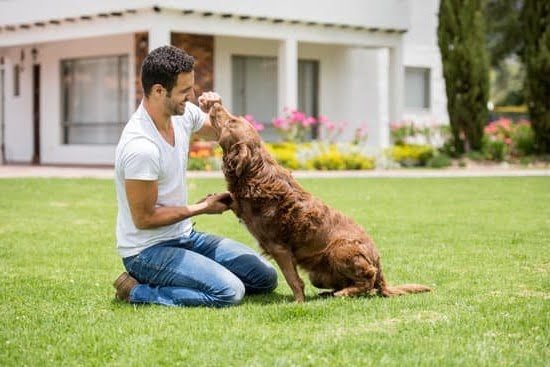Introduction
The Staffordshire Terrier, commonly known as the Staffy or Stafford, is an incredibly popular dog breed due to its loyalty and intelligence. In fact, the breed was named after an English county where they were kept by farmers as companions and guard animals.
Staffys typically have a strong personality; they are confident and energetic as well as intelligent, protective and independent. Because of their boisterous energy Staffys make excellent family dogs but can be temperamental if not provided with adequate exercise each week. While most Staffys average around 28-38 cm tall and 14-17 kg in weight, there’s a wide variation between specimens which can reach up to 55 cm at the shoulder! On the whole, male Staffys tend to be larger than their female counterparts.
With proper love and care, a Staffy can live 10 – 13 years. Many loyal Staffy owners would agree that it’s never enough time for these lovable dogs who are always so eager to get involved in any activity and please their owners. Over the years there have been countless stories about how protective and loving a Staffy can be; many have gone above and beyond proving themselves to be the ultimate companion animal.
Given all this information it is easy to understand why training your own Staffy is so important; it will help them socialise better with other animals, humans and keep their behaviour on track while they grow into full adulthood. Let’s look more into how you can train your beloved staffy pup…
Training Basics
Training a Staffordshire Terrier is an important step to having a happy, healthy relationship with your pup. As with all canine breeds, it’s essential to start training your Staffy early and establish trust so that the process of teaching your pup obedience and good behavior can begin.
The best way to train a Staffordshire Terrier is through positive reinforcement. This type of approach uses rewards or praises after good or desired behaviors have been displayed. It’s also important to be consistent in these rewards and training. Stick to one system of training; don’t try to switch methods in the middle as this can confuse your dog.
When it comes to engaging your pup during the training process, keep things fun and interactive! Playing games like hide-and-seek or fetch are great ways for you two to bond while reinforcing desired behaviors like obedience. Incorporate treat-dispensing toys into playtime, as well—just make sure that they are always well supervised because these toys can pose choking hazards when broken down into smaller pieces. Finally, set aside a specific amount of time each day dedicated solely towards the purpose of training so that the routine becomes habitual and easier for them (and you) over time!
Housebreaking
Housebreaking your Staffordshire Terrier is a must if you want your pup to grow into a well-mannered, obedient dog. In order to make the process as easy and hassle-free as possible, it’s important to set up some house rules early on and consistently reinforce them.
To start off, make sure you have a designated area in the home where your doggy can relieve himself like a backyard or outdoor section of your home. Take him there regularly so he gets used to understanding this is his potty spot; the more consistent you are with bringing him to this area the better! Be sure to always reward him with love and treats when he does his business there correctly.
When indoors, try creating boundaries for different sections of the house using baby gates or limited access rugs/chairs that can effectively prevent accidents from happening. Enforce these rules strictly and be patient but consistent! If possible, buy some anti-chew sprays that contain safe ingredients from pet stores or pharmacies – this will help stop any chewing mishaps indoors when trying to train your pup.
Finally, create a predictable daily routine for your pooch which will help contribute to successful house training in the long run. Try setting regular meal times at appropriate intervals throughout each day (at least three small feedings are recommended) as well as scheduled potty breaks in which you take your dog outside right after eating or playing/napping and encourage them with lots of verbal praise when they successfully use their assigned bathroom spot outdoors. With patience and dedication, you’ll have an obedient Staffordshire terrier in no time!
Leash & Obedience Training
Step 1: Leash Training
Start by getting the appropriate leash and collar for your Staffordshire Terrier. Make sure they fit correctly, neither too loose nor too tight. Place the leash on the dog and offer treats. If the dog shows any resistance at first, remain calm and only provide positive reinforcement when they accept the leash without issue. Walk slowly with them and pay attention to their body language, rewarding them often with snacks or verbal praise.
Step 2: Basic Obedience Commands
Using a combination of rewards (snacks & verbal praise) and clear commands, train your Staffordshire Terrier to recognize ‘Sit’, ‘Lay Down’, ‘Stay’ & ‘Come’. Ensure each command is only given once clearly as repeating yourself may cause confusion for your pup. Feel free to use hand signals such as pointing or raising an open palm in addition to verbal commands for them to understand quicker. Make sure each command is followed through completely before giving any reinforcement or reward to ensure proper obedience. If the pup shows any signs of misunderstanding or boredom move onto something else until they have shown a better grasp on the task at hand.
Step 3: Practice Makes Perfect
Continually practice each command frequently (at least once a day preferably) so auditing each one becomes second nature for your pup as learning new skills takes time! Start off with shorter bit-sized sessions that gradually increase in length as they grasp more understanding of each skill!
Socialization
It is essential to socialize your Staffordshire Terrier in order to teach them how to appropriately interact and respond to other animals and people. Socialization helps reduce negative behaviors such as fear, aggression, anxiety, and shyness – all of which can be exhibited in a Staffordshire Terrier. When introducing your terrier to other animals or people, it is important to do so gradually and on the terrier’s terms. Start by allowing your dog some space away from the other animal or person, then gradually decrease the distance over time. If at any point your staffy becomes uncomfortable or scared, take a step back. You should also ensure that any interactions between your terrier and other animals/ people always have positive outcomes in order for the terrier to better recognize and respond appraisingly to new experiences. Pairing positive reinforcement with each interaction will create an atmosphere of trust and security for both you and your staffy as they become more sociable in different environments or around new people..
Set Boundaries & Establish Rules for Your Dog
Setting boundaries and rules for a Staffordshire Terrier (or “Staffy”) is an important part of responsible dog ownership. By clearly establishing guidelines, your staffy can learn how to behave appropriately while at home, out in public, and when playing with other dogs.
Start by selecting a few simple commands – such as “sit”, “down”, and “come” – that you can use to direct your pet when necessary. When training, avoid using excessive force or harsh tones; puppies respond best to positive reinforcement techniques that reward desired behaviors with treats or praise. A clicker can also be used during training sessions to help mark the times when your pup performs correctly.
In addition to verbal commands specific to your pet, also set general house rules such as no jumping on furniture or people, no chewing or digging around in trash cans, and no barking when not necessary. It’s important for Staffies (and all dogs) to have plenty of exercise every day in order to stay healthy and mentally alert. Take the time to teach them the basics of leash walking so they can join you on safe walks each morning and evening.
Create a special area within your home where they can have their own space – complete with cozy bedding and toys if desired – so they don’t feel overcrowded while family members are going about their daily routines. Finally, find other dog owners who have staffies so your pup can socialize properly with their canine counterparts and gain new skills through playtime activities like fetch or agility drills
Conclusion
In conclusion, training a Staffy Dog can be challenging at times; however, with consistency and an understanding of their unique traits and needs, you can help them become well-behaved companions. Additionally, education on the various methods and techniques used in staffy dog training is key to success. If you’re looking for more detailed information about the Staffordshire Terrier breed, there are a variety of resources available online for further reading. Many readers have shared testimonials about how successful they have been in training their Staffy Dogs, citing that consistency and patience has been key for them in their efforts. Examples include owners who have trained their dogs not to beg at the table or jump up on people when they come over. The key takeaway from these stories is that each individual Staffy may require a different approach or technique – so never give up and don’t be afraid to try out different strategies!

Welcome to the blog! I am a professional dog trainer and have been working with dogs for many years. In this blog, I will be discussing various topics related to dog training, including tips, tricks, and advice. I hope you find this information helpful and informative. Thanks for reading!





